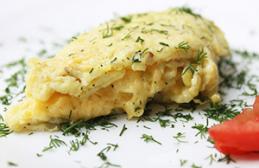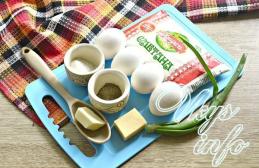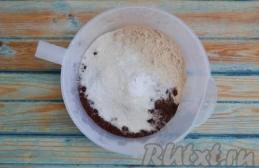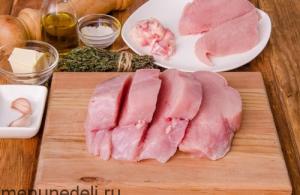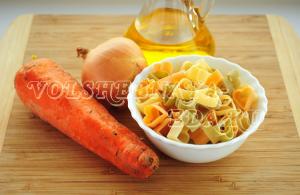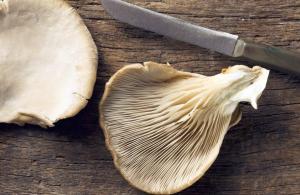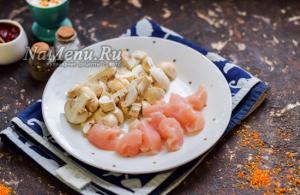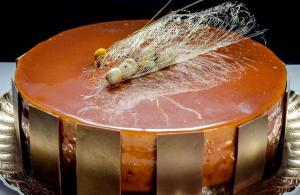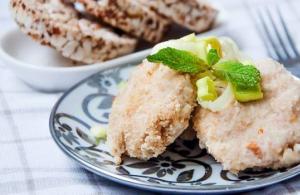The production of champagne wines is carried out in almost all countries where wine grape varieties are grown. Spanish winemakers consider their pride to be sparkling Cava wine.
At the state level, laws have been passed that allow the production of cava in several Spanish regions. Moreover, about 95% of such alcoholic drinks are produced in Penedes, one of the regions of Catalonia. The city of San Sadurní has the largest number of special basements where the cava matures.
Grape
The mild Mediterranean climate allows the Spaniards to grow elite grape varieties for the production of sparkling wines, the popularity of which is growing every year. The taste of the drink will depend on the specific grape variety used in the production of various brands of Cava champagne.
Local grape varieties are used to produce traditional types of white sparkling wine:
- Xarel-lo, which gives the drink a noble sourness;
- Macabeo, enriches the wine with fruity aromas and fills it with freshness;
- Parellada infuses champagne with the aroma of fresh flowers.
Pink Cava champagne is produced from local grape varieties:
- Trepat;
- Monastell;
- Garnacha;
- Pinot Noir.
Grapes grown in highland Spanish soils give the drink an aroma and taste that cannot be reproduced in other wine-producing countries of the world.
Main characteristics
Made in Spain.
Strength – 11.5 degrees.
Bottle volume – 0.75 liters.
Production technology
Spanish cava is produced using classical technology. The technology is similar to that used to make French champagne.
- In the process of making sparkling wine, hand-picked and carefully sorted berries are used.
- The resulting first-press grape juice undergoes primary fermentation in special vats made of stainless alloy.
- Wine material is bottled.
- Special yeast and sugar are added. The bottle is sealed with a temporary stopper.
- Over the course of several months, the sugar dissolves and starts the process of secondary fermentation and champagneization of the cava.
In order to remove sediment from the bottle, it is turned upside down and frozen. After which the vertical position is restored and the plug is removed. The frozen sediment is squeezed out under the influence of a pressure difference. After this, the bottle is sealed with a cork stopper and sent to a special storage facility for several more months.

Classification
Brands of cava differ not only in color, variety and region where the grapes are grown. Spanish foam wine is classified by aging period:
- Cava – alcoholic drink, aged 9 months;
- Cava Reserva – sparkling wine, the minimum aging of which is 1 year and 3 months;
- Cava Gran Reserva is a Spanish champagne aged for 2.5 years.
- Brut Nature (brut nature) – without sugar;
- Extra Brut (extra brut) – sugar content is allowed no more than 6 grams;
- Brut (brut) – sugar content does not exceed 15 grams;
- Extra seco (extra dry) – sugar content no more than 20 grams;
- Seco (dry) – maximum allowed 35 grams of sugar;
- Semi-seco (semi-dry) – up to 50 grams is considered the norm.
Difference from champagne
Despite the fact that the production technology of cava and champagne has much in common, there are a number of significant differences between these types of alcohol.
- A wider range of local grape varieties are used to produce cava.
- Real French champagne has a longer aging period.
- Traditionally, champagne is sweeter.
- The cost of Spanish cava is significantly lower than that of champagne from France.

Most popular brands
Modern producers offer consumers a large number of sparkling wines from Spain. Among the popular brands it should be highlighted.
Jaume Serra (Jaume Serra). Cava Brut prepared using classical technology. This white champagne has all the qualities that sparkling wine lovers value so much. The drink's collection includes a large number of prestigious international awards.
Codorniu Nuviana Cava. Produces brut, semi-sweet white and dry rose brands. Nuviana Cava, famous all over the world, has a harmonious taste and delights with the long play of bubbles in the glass.
Gran Codorniu Reserva Chardonnay. Spanish champagne, which is made exclusively from Chardonnay grapes. Due to long fermentation and thanks to 15 months of aging, cava acquires a rich and refined taste.
Masachs Brut Nature Gran Reserva is a champagne produced using a blend of three varieties of ripe grapes. The long process of secondary fermentation produces a drink with a deep, balanced taste.
Castell Llord Cava Brut DO is a sparkling wine prepared according to a traditional Catalan recipe. Proper selection of wine materials allows you to get a light and refreshing alcoholic drink.

How to serve
Kava is not a collectible spirit. It is recommended to use it on the same day the bottle was opened. In this case, the kava needs to be cooled to a temperature of 5–9 degrees Celsius. You should not use the freezer for this. It is best to keep sparkling wine in a bucket of cold water, to which pieces of crushed ice have been added.
It is recommended to pour cava into “tulip” or “flute” glasses. It is this shape of the glass that will help to fully reveal the aroma and taste of champagne. And through the transparent walls of the glasses you can admire the long play of small bubbles in the glass.
Each brand of cava can be offered as an aperitif. A good company for sparkling wine from Spain will be:
- assorted fruits and berries;
- Emmental, Bosphorus and Gruyère cheeses;
- seafood with lemon juice;
- desserts and confectionery.
In Catalonia it is impossible to imagine a celebration without cava. Therefore, it is also served with main fish or meat dishes. It is believed that the very small bubbles of champagne help you digest hearty foods faster.
Historical reference
The production of sparkling wines in Spain dates back to 1551. While traveling around Europe, the young owner of a winery in Catalonia, Don José Roventos, came to the province of Champagne and tasted French champagne for the first time. His admiration knew no bounds. Returning to his native place, he decided to reproduce the technological process for producing sparkling wines.
The problem was that in his homeland the grape varieties from which classic champagne is made were not cultivated at that time. But this did not stop Don José Roventos. To produce his own champagne, he began using grape varieties that were already grown in his vineyards. The experiment turned out to be successful.
Gradually, a unique recipe for the production of local sparkling wines emerged. This is how the Spanish Cava champagne was born, which is now loved far beyond the borders of Spain.
Sparkling wines belonging to the champagne category also have many varieties.
Some of these species are known in our country, and some have just begun to gain popularity, for example, Cava champagne, which has an interesting and unusual preparation technology.

However, the Spaniards resorted to a little trick - they independently began to produce a similar alcoholic product in their country and began to call it Cava.
Reference! In essence, this is the same champagne, but due to the difference in the country of origin and the nuances of preparation, it is still correct to call it sparkling wine, which, by the way, the Spaniards do with pleasure.
At the very beginning of the production process, winemakers from Spain tried to fully adhere to the preparation technologies of French champagne producers.

However, they soon realized that the only champagne in the world had already been created and there was no other and no other was needed.
Therefore, we developed our own technology for preparing this drink, which today is truly unique.
Reference! Today, the production of such elite alcohol is regulated at the state level. There are special regulations that contain information about exactly in which regions grapes can be grown and Kava can be made from them.
Approximately 90% of Spain's production capacity is located in Penedès, in Catalonia.
By and large, Cava champagne is actually an elite white wine, however, despite this, even the Spaniards themselves simply call it Cava champagne.
It can be dry or sweet, white or pink. One thing remains unchanged - the strength is about 11 revolutions and the unsurpassed taste and aroma.
Watch the video in which a wine connoisseur talks about the pros and cons of Cava sparkling wine:
Types of sparkling wine native to Spain
Today, there are several main criteria for dividing this sparkling alcoholic drink into types. The main one is the aging period of the champagne itself.
Aging period
According to this feature, Kava can be:
- Cava- This is an alcoholic product that has the shortest aging period, it is exactly nine months. The result is a sparkling wine with a light and bright aroma, as well as a rather noticeable sourness in the aftertaste. Of all the varieties of such Spanish champagne, this is the most budget-friendly.
- Cava Reserva- This is alcohol, which already belongs to the category of elite drinks. It is aged for at least fifteen months before being sold. As a result, the finished sparkling wine has a very delicate and elegant aroma and sweet taste. This champagne usually falls into the category of semi-sweet or semi-dry drinks.
- Cava Gran Reserva– this sparkling wine is a premium drink; it must be aged for at least 30 months before being sold. During this period, the taste, aroma and color of the finished champagne improve several dozen times. This drink is served at social evenings of top officials of the state and at the most ceremonial receptions. It is worth knowing that this is exactly the kind of Kava that is made without the additional use of granulated sugar. Therefore, it belongs to dry sparkling wines.
The aging period for all these types of Spanish champagne is indicated after it is bottled. That is, an already prepared alcoholic product is subjected to additional long-term aging.

Grape sort
Depending on the grape variety used, Cava champagne can be:
- white;
- pink.
Reference! Moreover, both types can have completely different sweetness in taste.
If we talk about the percentage of sugar in this alcohol, then on this basis Kava is divided into the following groups:
- Brut de Brut– extremely dry sparkling wine. The sugar content in it cannot exceed 2 units.
- Brut Nature. Here, a liter of ready-made champagne can contain three grams of sugar.
- Extra Brut. Approximately 6 grams of sugar per 1000 ml of finished drink.
- Brut contains from 7 to 15 units of sugar. This is the type of champagne that is most often exported due to the high demand for it in other countries.
- Extra Seco– extra dry sparkling wine, may contain from 12 to 20 units of sugar.
- Seco. Here, the amount of sugar in 1 liter of drink can vary from seventeen to thirty-five grams.
- Semiseco. The amount of sugar in this drink ranges from 35 to 50 g. This sparkling champagne is most loved by the Spaniards themselves.
- Dulce– the sweetest Kava with a sugar content of up to 50 units. The people of Spain themselves do not particularly like this drink, so it is usually made only for export.
When choosing Kava yourself, you should not only carefully read its label, but also take into account the amount of sugar in it indicated by the manufacturer.

The fact is that with the same quantity, different manufacturers can classify such a drink as either semi-sweet or semi-dry sparkling wine.
Beverage production technology
Quite interesting is not only the history of the appearance of Kava, which goes back more than 150 years, but also the technology for preparing this alcoholic drink, which includes the following production stages:
First you need collect the appropriate grape varieties.
Reference! The collection of raw materials is carried out only by hand and only the largest and juiciest berries, free from any defects, can be used to prepare this delicious Spanish champagne.
Then collected the raw materials are sent to special juicers. The finished juice is poured into special tanks and sent for primary fermentation.
When the previous stage is completed, the wort is filtered and enriched with special wines, yeast and sugar. Some manufacturers also add some freshly squeezed grape juice at this stage.
The resulting mixture bottled and sealed with temporary stoppers. They are placed in special rooms, where the secondary fermentation of Kava occurs directly in the container. This stage lasts from nine to twelve months.

Then you need remove sediment from the bottom of the bottle. At the same time, winemakers do not drain the resulting alcohol; they perform the so-called remuage.
- In this case, the bottles are carefully rotated around their axis and placed on the neck.
- In this form, the sediment located at the bottom completely settles on the neck of the container.
Once all the sediment has moved to the new area, it must be removed. For this bottles are frozen.
After that turn the bottles upside down and carefully remove the temporary stopper, the sediment itself is simply pushed out due to the high internal pressure inside the container. This stage of production is called disgorgement.
After this bottle closed with permanent lids and left to mature for between nine and 36 months.
The birth of cava can be considered 1872, when Josep Raventos from the Codorníu company, returning from France to Catalonia, impressed by what he saw, released the first Spanish sparkling wine made using labor-intensive champagne technology.
For the first hundred years, these wines were called Champaña (champagne), since champagne was the model that Josep Raventos tried to get closer to. But in the 1970s, the French achieved exclusive rights to the “champagne” label and a legislative ban for the rest of Europe on the use of this name. There was a need to choose an alternative name for Spanish sparkling wines. The choice fell on the word “cava”, and in the country’s wine legislation a corresponding denomination (Spanish appellation) appeared - Cava, reserved exclusively for white and rose sparkling wines.
And with the emergence of their own name, cava producers began to diligently differentiate themselves from their famous French rivals in an attempt to find themselves.
Unencumbered by Champagne's hefty price tag, Cava was promoted as a wine that didn't require a special occasion to enjoy it, yet offered a quality drink with bubbles as good as Champagne.
The first Cava wines were produced exclusively in Catalonia. Modern Cava can be produced in many different parts of Spain: Aragon, Navarre, Rioja, Basque Country, Valencia and Extremadura all have areas included in DO Cava. However, in practice, less than 10% of this national sparkling wine is produced in these regions. The heart of production can still be considered the municipality of Sant Sadurní d'Anoia in Catalonia.
There are three main varieties of cava: Macabeo, Parellada and Charel-lo. But currently, the use of textbook “champagne” varieties - Chardonnay and Pinot Noir - is also practiced.
Macabeo (aka viura) makes up about half the standard blend. But not so much because of its taste merits (it is quite simple), but as a winemaker’s insurance: these grapes form ovaries relatively late, so the risk of crop loss in the event of spring frosts is not high.
Curious, slightly earthy aroma, which distinguishes cava from champagne, is usually attributed to the Charel-lo variety.
Pinot Noir and Monastrell (aka Mourvèdre) are used to add depth and color to Cava Rosado (aka Cava Rosé)
Garnacha (aka grenache), malvasia and trepat are also allowed in the production of cava, but the latter is only allowed in rosé wines.
The requirements for the production process for cava are in many ways similar to the regulations of Champagne: all cava must be aged on lees for at least 9 months and reach a strength of at least 10.8% and no more than 12.8%.
The gradation of kava according to the degree of final sweetness/dryness is as follows:
- Brut Nature: 0-3 g/l residual sugar.
No dosage. - Extra Brut: 0-6 g sugar per liter
- Brut: 0-12 g/l
- Extra Seco (Extra dry): 12-17 g/l
- Seco (Dry): 17-32 g/l
- Semi-Seco (Semi-dry): 32-50 g/l
- Dulce (Sweet): 50 g/l
Sources: portal
Manufacturer
Pere Ventura and Familia S.L. (Pere Ventura I Familia S.L.)
Farm Pere Ventura located in Sant Sadurní d'Anoia (Catalonia) 30 km west of Barcelona. This town in the Penedès wine region is famous for producing 95% of Spanish cava sparkling wines. The company was created in 1992, but the history of the family of the company's founder, Pere Ventura, is closely connected with the history of cava for more than 140 years. His great-grandfather, Manuel Montserrat Font, worked as a winemaker at the Codornho company, where he helped produce the first bottle of cava. The current owner's grandfather, Pere Ventura, trained in France and then worked as a winemaker at the Mercier champagne house in Epernay, then using the knowledge and experience gained in the production of cava. This helped him become one of the most respected oenologists in Penedès. His grandson, Pere Ventura Jr., named after his grandfather, inherited not only the name, but also a love of winemaking and a desire to constantly improve. In 1992, at the age of 29, he created the company, naming it after himself and his ancestors, which became one of the most famous names in DO Cava and a symbol of high quality products.
Pere Ventura is one of the leaders in the production of cava, harmoniously combining the use of traditional production systems with the most advanced technology. The company has hundreds of hectares of its own vineyards, but also cooperates with other farmers, certainly controlling the entire process of growing and harvesting grapes. The production hall with an area of 2.5 thousand square meters, where the latest equipment is installed, is located underground, which allows maintaining optimal temperature conditions. In the cellars, which in the form of vaulted galleries descend to a depth of 23 meters and stretch for 1 kilometer, bottles with a noble drink are aged in silence and coolness.
For Pere Ventura, the entire path that wine takes is important: from its birth in the vineyard to the moment the wine is poured into a glass; The logo on the label in the form of a palm print is a symbol that this entire journey is in good hands, a symbol of a quality guarantee of great taste.

STORY
REGION
Catalonia
Catalunya- a historical region and autonomous community in Spain, in the northeast of the Iberian Peninsula between the Mediterranean coast and the Pyrenees. This is a region with a truly independent spirit. Although separatist sentiments were almost always present in Catalonia, they began to actively develop only in the 17th century. This led to the Spanish government recognizing Catalonia's right to autonomous governance at the beginning of the 20th century.
Currently, Catalonia is one of the largest industrial, agricultural, tourist and cultural centers of Spain, where tourists and specialists come from literally all over the world to enjoy the local variety of culinary delights and taste the famous Catalan wines. Catalonia includes four provinces - Tarragona, Gerona, Lleida, Barcelona. A little less than a quarter of the total population of Spain lives here (by the way, a significant part of the Catalans also “live” in France, on the territory of Roussillon). Local residents speak Catalan, a language similar to Spanish and French at the same time. Catalonia is mountains covered with oak and pine forests; these are the wonderful beaches of the Mediterranean Sea; these are numerous mountain rivers and lakes; these are ancient cities, ancient castles and monasteries. And finally, these are wonderful wines.
Catalonia's wine industry is very diverse, producing many DO wines, as well as the famous sparkling Cava. Local winemakers use areas with very different topography for viticulture. There are 12 DO zones in Catalonia, although many of the most interesting still wines these days are produced outside the DO rules. The most significant and largest wine-growing area, established by law, is the Penedès DO. The second most important is DO Priorat, where 1800 hectares of land are cultivated (this is one of the smallest areas of DO).
However, the highlight of Catalonia is undoubtedly the sparkling wine Cava, which was first created on the territory of the modern wine-growing area of the same name DO Cava; the official year of her birth is 1872. That is why this wine is associated primarily with Catalonia, including for the Spaniards themselves. Despite the fact that Cava is a relatively young drink, it is considered a serious rival to champagne, in particular in terms of export volume (which, by the way, for the first time in history exceeded the export figures for Champagne wines in 2001).
APELLATION
The sparkling Spanish cava wine was first created here, on the territory of the modern wine-growing zone of the same name. DO Cava; the official year of her birth is 1872. That is why this wine is associated primarily with Catalonia, including for the Spaniards themselves. Despite the fact that Cava is a relatively young drink, it is considered a serious rival to champagne, in particular in terms of export volume (which, by the way, for the first time in history exceeded the export figures for Champagne wines in 2001).
As far as climatic conditions are concerned, Kava producers are in a very advantageous position. Here the influence of the Mediterranean Sea is felt quite strongly. Hot, dry summer, winter and early spring with frosts. The average annual temperature is 14 °C. The annual precipitation level is 500-800 mm per square meter. meter. The number of hours of sunlight is 2400-2600. Since the climate in Catalonia is warmer and milder than in Champagne, the vines produce good harvests almost every year, allowing for the production of high-quality sparkling wines. Many of them become millennial. Most of the vineyards dedicated to Cava are located on favorable calcareous and rocky soils.
The production methods for Cava and Champagne are similar, but they are made from completely different grape varieties. White varieties are mainly used - these are Macabeo, widespread in Spain, Xarello, which gives the wine an original flavor, and the refined Parellada. Chardonnay and Malvasia are also used; For rosé wines, the red varieties Garnacha, Soubirat, Pinot Noir and some others are used (unlike Champagne, it is not customary to make white sparkling wines from red grape varieties). In the wine provinces of Spain, it is allowed to produce sparkling wine only using the classical method (champagne method).
Kava has a very wide range. Young Spanish grape wines have a soft, balanced taste, which makes them an excellent aperitif and accompaniment to seafood salads. More aged wines with a rich bouquet and full taste with hints of sea and minerals are perfect for seafood and fish dishes, which are rich in Catalan cuisine. Gran reserva, as well as wines made using the Chardonnay variety, are ideal for substantial white meat and poultry dishes. Exquisite rosé Cava from Pinot Noir will make an excellent pairing for game, and semi-dry for desserts.
Sparkling wine has a euphoric effect on humans. This is probably why it appeals to people with creative professions. The American writer Ernest Hemingway openly admitted his love for champagne more than once, and in the operetta by Johann Strauss (son) “Die Fledermaus” at the end of one of the scenes the choir sings: “Long live champagne! It is this that is the real king!”
Where did champagne come from in Spain?
Everyone will say that sparkling wine is produced in France. However, unlike the situation with cognac, which can only be produced in this country, Spain also produces champagne. How could it happen that the French willingly shared their national treasure with the Spaniards? The fact is that in ancient times, in the vicinity of Reims, where the famous sparkling wines were produced, vineyards began to die. To preserve the unique varieties, the Spaniards placed the vines on their land. When the phylloxera that was destroying the vineyards in Reims was over, French winemakers returned these crops to their historical homeland. However, they had to agree to return the favor and allow the Spaniards to produce sparkling wine, officially recognized as champagne. However, the desire to create sparkling wine among Latinos appeared much earlier. The credit for the fact that Spain produces champagne today goes to Don José Raventos, who was the owner of a winery or, as the local aborigines say, a bodega called Codorniu, located in Catalonia. Back in 1551, the production of classic white and red wines began under this brand. Roventos developed a passion for bubbles around the 1860s. Then he traveled around Europe, selling wine from his enterprise along the way. So Roventos was brought to Champagne, where, naturally, he was treated to champagne. Being strongly impressed by this tasting, the winemaker in his native Penedes decided to make the same drink. However, here Roventos was faced with an unexpected problem - he had purchased equipment, but what to do with the raw materials? In France, sparkling wine is traditionally made from three grape varieties - Pinot Noir, Pinot Meunier and Chardonnay. In Spain, accordingly, they were not grown then. A solution was found, albeit not very elegant, but quite successful: Roventos simply took three varieties that grew side by side in his vineyards. Among the lucky ones were Xarello, Parellada and Macabeo. The first sparkling wine made from these Spanish varieties turned out to be quite successful. Roventos was triumphant, and the winemakers began to use the three varieties he had chosen for champagne out of habit, without bothering to look for new combinations. By the way, Spain introduced the first local champagne around 1872. After that, for 75 years it was manufactured by only two companies - these are, of course, Codorniu and Freixenet.
However, here Roventos was faced with an unexpected problem - he had purchased equipment, but what to do with the raw materials? In France, sparkling wine is traditionally made from three grape varieties - Pinot Noir, Pinot Meunier and Chardonnay. In Spain, accordingly, they were not grown then. A solution was found, albeit not very elegant, but quite successful: Roventos simply took three varieties that grew side by side in his vineyards. Among the lucky ones were Xarello, Parellada and Macabeo. The first sparkling wine made from these Spanish varieties turned out to be quite successful. Roventos was triumphant, and the winemakers began to use the three varieties he had chosen for champagne out of habit, without bothering to look for new combinations. By the way, Spain introduced the first local champagne around 1872. After that, for 75 years it was manufactured by only two companies - these are, of course, Codorniu and Freixenet. Turning Champagne into Cava Wines
It must be said that Roventos did not have a goal to outdo the French champagne producers. And there was no point in blindly imitating them either. Moreover, the sparkling wine Roventos received had a completely unique character. Over time, Spain classified its champagne as sparkling wine Cava. This term still refers to sparkling wine produced in Spanish Catalonia. Initially, it was made using classical technology, observed by Roventos in France. The main rule that the Spaniards strictly followed was the secondary fermentation of the drink directly in the bottle. However, French champagne and Cava sparkling wine have a number of fundamental differences. Catalan winemakers appreciated the work of Roventos. It must be said that they had one local tradition - on Sundays, after the end of the liturgy, which lasted about 10 hours, they gathered together to discuss matters. At one of these meetings, winemakers came up with a rather ambitious plan - since local varieties can make quite decent sparkling wine, then why not reorient all producers from Penedes to its production? As a result, this region of Catalonia would turn into something like Spanish Champagne.
But Spain produced decent champagne, and over time, local winemakers began to feel proud. They quite rightly believed that their sparkling wine deserved recognition in itself, and not because it was an analogue of another popular drink. In the 1970s, the designation “sparkling wine Cava” was finally assigned to Spanish champagne. After that, sparkling wine began to be produced almost throughout the country. Initially there were no territorial restrictions on this matter. But Cava champagne is mainly made in Catalonia - this region accounts for over 90% of the sparkling drink made in Spain. The champion can be called the area of Sant Sadurni d'Anoia, where the conditions turned out to be the most favorable. But in 1986, Spain joined the Common Market organization, which later transformed into the EU. To do this, local winemakers had to pass a special law, Denominacion de Origen (DO), regulating the rules of production and the boundaries of the region where champagne is produced. The Spanish appellation, which received official permission to produce Cava champagne, is spread over 11 provinces - Catalonia, Aragon, Valencia, Rioja, Navarre, Basque country, etc. Sparkling wine is produced in 270 bodegas located in this appellation. The number is, of course, impressive, but in fairness it is worth noting that all these factories produce only a third of the volume of sparkling wines produced in Champagne. According to local rules, it is not forbidden to mix berries from different vineyards when producing champagne. The main thing is that the site itself is registered. In 1991, the regulatory board DO Cava was created. Its head office is located in a city called Vilafranca del Penedes, but employees control the sparkling wine Cava, produced throughout Spain. But the city of Sant Sadurni d'Anoia, located literally next door, has become, although not the official, but generally recognized capital of Cava. It is here that the bodegas Codorniu and Freixenet are located, which were the first to produce sparkling wine in Spain.
Production of sparkling wines Cava
.jpg) It should be remembered that Spanish Cava sparkling wine is not an imitation of French champagne, but a completely independent drink. However, their production technologies have quite a lot of similarities. The vineyards from which the grapes are harvested to produce Champagne and Cava sparkling wine grow on soils with a similar composition. The climatic conditions in the Champagne and Cava appellations are also very similar. A major role in both cases is played by the proximity of large bodies of water - the English Channel and the Mediterranean Sea, respectively. Champagne and Cava sparkling wine are produced using the same classical technology, in which the drink undergoes secondary fermentation in the bottle. In addition, they have a similar classification that characterizes sweetness. Both Champagne and Cava sparkling wine come in non-vintage and vintage (made from grapes from the same harvest). Cava is traditionally harvested by hand. It starts at the end of August and lasts until the end of October. The grapes are placed in stainless steel trailers or boxes with a capacity of 25 - 30 kg and sent to the nearest winery. Every 150 kg of grapes produce about 100 liters of juice. Moreover, Cava champagne is made only from the first pressing juice of Mosto Flor, which is considered the softest. It is filtered and subjected to primary fermentation. The resulting wines of various varieties are mixed by the oenologist into a specific blend. They are bottled and undergo secondary fermentation, which consists of several stages: Bottling - wine material with wine yeast, sucrose or concentrated grape juice is placed in bottles, which are stored in the cellar for 9 months;
It should be remembered that Spanish Cava sparkling wine is not an imitation of French champagne, but a completely independent drink. However, their production technologies have quite a lot of similarities. The vineyards from which the grapes are harvested to produce Champagne and Cava sparkling wine grow on soils with a similar composition. The climatic conditions in the Champagne and Cava appellations are also very similar. A major role in both cases is played by the proximity of large bodies of water - the English Channel and the Mediterranean Sea, respectively. Champagne and Cava sparkling wine are produced using the same classical technology, in which the drink undergoes secondary fermentation in the bottle. In addition, they have a similar classification that characterizes sweetness. Both Champagne and Cava sparkling wine come in non-vintage and vintage (made from grapes from the same harvest). Cava is traditionally harvested by hand. It starts at the end of August and lasts until the end of October. The grapes are placed in stainless steel trailers or boxes with a capacity of 25 - 30 kg and sent to the nearest winery. Every 150 kg of grapes produce about 100 liters of juice. Moreover, Cava champagne is made only from the first pressing juice of Mosto Flor, which is considered the softest. It is filtered and subjected to primary fermentation. The resulting wines of various varieties are mixed by the oenologist into a specific blend. They are bottled and undergo secondary fermentation, which consists of several stages: Bottling - wine material with wine yeast, sucrose or concentrated grape juice is placed in bottles, which are stored in the cellar for 9 months; Remuage - turning and lightly shaking the bottle. Gradually, it is completely turned upside down so that the remaining yeast and sediment collect in the neck;
Disgorgement – removal of sediment. To do this, the neck of the inverted bottle is frozen and the cork is removed along with the frozen sediment;
Corking - the volume of wine in the bottle is restored by varying the amount of sugar (it is at this stage that Cava becomes brut, dry, semi-dry or sweet), and finally sealed with a cork stopper;
Labeling and packaging - labels, a necklace, a control stamp are glued onto the bottle and the neck is wrapped in foil. Cava sparkling wine can be white or pink. Champagne Spain produces soft, fresh, with a delicate fruity and yeasty taste. There is no excessive acidity in this drink. And, by the way, it costs less than French sparkling wine. This is facilitated by many factors: vineyards in Catalonia are not as expensive as in Champagne, and the Spaniards have more modern technologies, and production volumes are larger. However, champagne and Cava sparkling wine are not competitors at all. Unlike its French ancestor, Cava does not claim to be a symbol of luxury. The purpose of this drink is to lift your spirits, which it does quite well.

